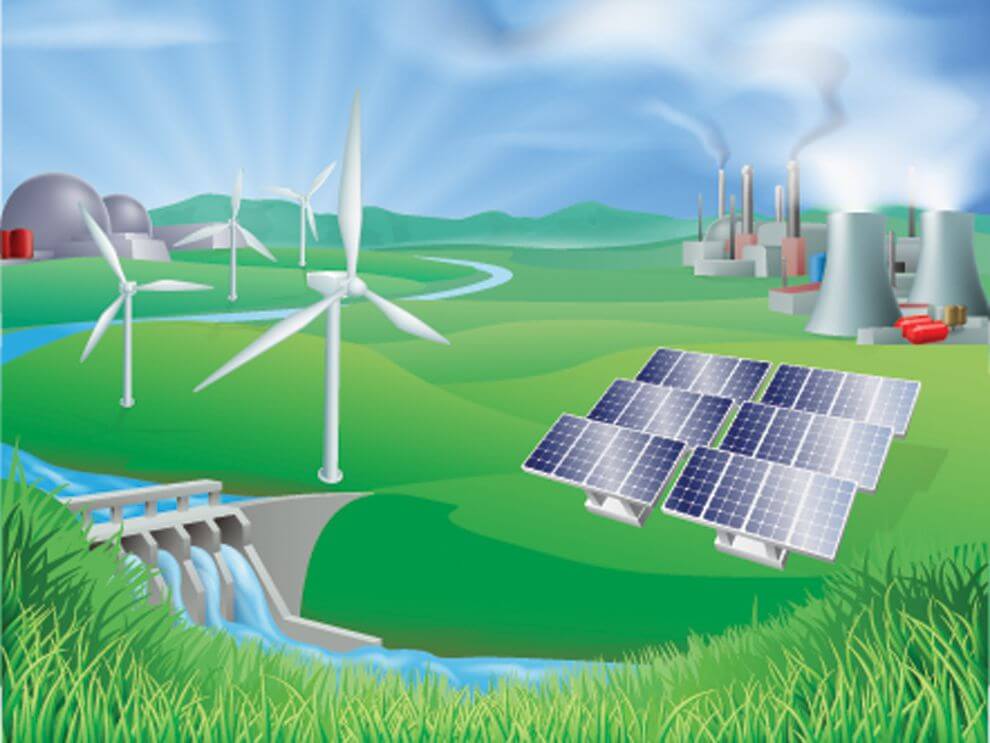Content Attributes
Innovations we currently have made it faster than ever to commit to workplace sustainability. Starting from the products in the home to the ways office buildings are powered, adopting your company to make a stand for a more sustainable future is a worthwhile project.
Many businesses have pledged commitment to go down the path to running their business on 100% renewable power. The world now knows that renewable energy sources and the disruption of fossil fuel-driven power are crucial planet’s future.
Check out how Singapore is approaching alternative energy. If you have a business on its way to adopting sustainable practices, this post might help you. In basic terms, let’s discuss the main types of renewable energy sources for businesses, from popular solar energy to the relatively new hydrogen economy.
Solar Energy for business

Solar energy generates energy by capturing sunlight, converting it into heat, and finally, electricity. Businesses have used solar panels and other types of solar arrays for decades. A primary benefit of solar is that sunlight is readily available and has an endless supply. The right technology for solar energy could help businesses reduce their monthly energy bills and gradually eliminate long-term energy costs.
Some local and state governments offer incentives for solar energy through tax credits for investment businesses. The programs help with the initial investment costs, although some companies may feel overwhelmed by the initial costs associated with installation.
Wind Energy for business
Wind farms capture wind energy through turbines and convert it into electricity. A massive wind turbine stands on Pulau Semakau, Singapore, about 8km south of the mainland, and it can generate wind energy to power around 35 Housing Board flats annually. Wind energy is a clean energy source, meaning it doesn’t produce or release any other harmful products into the air. Wind farms tend to be built in remote or rural areas and require huge infrastructure to transport converted energy back into cities.
Still, wind energy is one of the cheapest energy sources available.
Hydroelectric Energy for business
Hydroelectric Energy is derived from dams and bodies of water. This energy source produces no pollution but may require more energy than it can generate. Dams can disrupt waterways and impact wildlife in the area.
Hydroelectric power cannot be harnessed in Singapore as it has no river system with fast-flowing water throughout the year.
Biomass Energy for business
Bioenergy is derived from biomass or organic matter from previously living plants and organisms. Wood in a fireplace is a simple example of biomass. Biomass requires burning or harnessing the methane gas produced by the natural decomposition of organic materials. Singapore took a step towards becoming a clean energy hub in Asia-Pacific through the Singapore Photoelectricity-Biomass Energy Integrated Power Generation Project.
Geothermal Energy for business
Geothermal energy utilizes the earth’s heat to generate electricity. Geothermal energy is typically projected for commercial utility on a larger scale or as part of a sustainable business practice locally. Geothermal energy remains one of the least common renewable energy sources, largely due to infrastructure investment. The potential of geothermal is its self-replenishment and the minimal footprint it leaves on land.
In Singapore, current developments in geothermal technology, such as geothermal systems which harness heat from deep dry rock, may allow Singapore to obtain geothermal energy at greater depths, with little impact on the environment and safety.
Hydrogen Energy
Hydrogen energy is universally known as a game-changer for the renewables market. Multiple Asia-Pacific countries such as Japan, Australia, and South Korea are already investing seriously in pilot hydrogen infrastructure and technology projects. While initially expensive to produce and transport, hydrogen is projected to pay off exponentially in the near future thanks to its versatile and wide-ranging applications.
Learn more about the hydrogen economy and why it has been dubbed the renewable energy source to watch, especially as nations race to reach net-zero emissions by 2050.
Renewable energy’s future is looking bright! Learning about the various types of renewable energy available for your business will help you make the right sustainability decision.